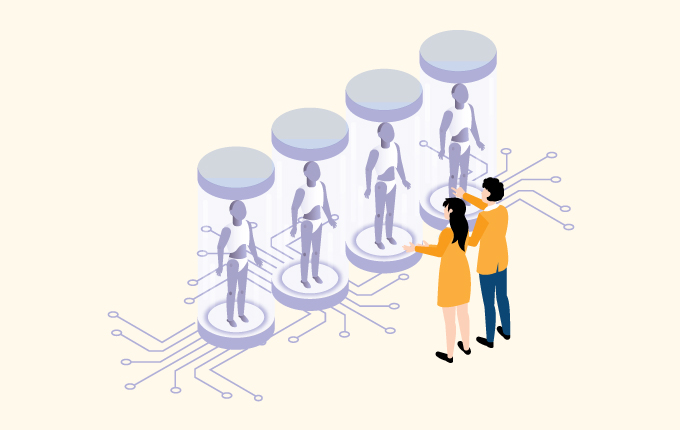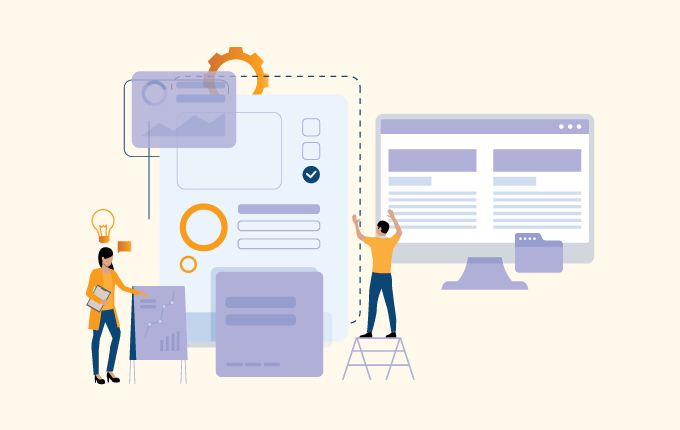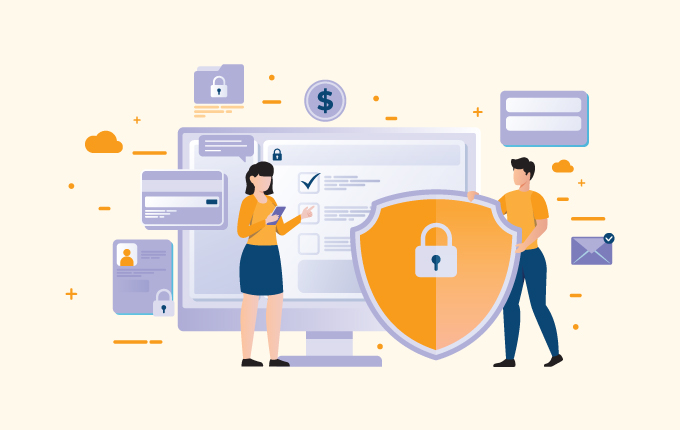Cloud ServicesIT Consulting & StrategySecurityTech Support & Managed IT ServicesTelecommunicationsConstructionEducationFinanceHealthcareLegalReal Estate
After months of quarantine and social distancing, COVID-19 cases are on the decline in New York. With businesses now planning to re-open and bring employees back to the office, the question becomes, is having staff in-house always the best solution?
There are many indications that industries like financial services, technology, the insurance industry, and many others may decide not to bring employees back to the office. Why deal with crowded subways and congested highways if you don’t have to? Long commutes waste time and increase stress, and reducing the footprint of your office is an excellent way to cut costs.
As a technology services provider and long-time proponent of employee mobility, we love the idea of more companies realizing the benefits of work from home. We also understand the many challenges each company will need to overcome to make that a reality.

Start with a Thorough Appraisal of Your Network and IT Maintenance
In the past, there was a clear distinction between on-premise and remote systems, with the former often receiving priority. In this traditional arrangement, which was common even just a few years ago, business leaders viewed remote work systems as an afterthought or “add-on” to the in-office technology.
The new approach requires a different mindset. It would help if you looked at your network holistically, with equal attention both to on-premise and remote services. Is each system built with the proper security and redundancies in place? Are they supported in a way that produces optimal stability?
The following essential elements must be in place for remote workforces to succeed:
- Telecommunications connectivity that supports remote collaboration and mobility
- Software platforms that enable employees to share information and work together efficiently
- Enterprise-grade firewalls and routers allowing fast access to on-premise resources
- Appropriate help desk and support to help workers quickly address technology issues
Strategically Migrate Services to the Cloud for More Freedom and Security
Cloud migration is when you move data from an on-premise system to a cloud service. Once in the cloud, employees will be able to securely access data and applications from any location, which makes a successful cloud migration an indispensable part of building a modern IT infrastructure.
Businesses often choose to work with an experienced MSP like Manhattan Tech Support to help them deploy reliable cloud systems, as accessing the knowledge and skills necessary for this complex task is nearly impossible when relying on in-house staff alone.
Here are some of the elements that make our cloud migrations so popular:
Careful Cloud Planning
It’s not a good idea to try moving a business’s entire infrastructure to the cloud at one time. Instead, services should be migrated individually. This deliberate, gradual migration process should only begin after an in-depth analysis to identify potential pain points.
- Create a cloud migration checklist to ensure maximum efficiency and minimize downtime
- Determine a cloud service model, like a public or hybrid cloud, and identify appropriate vendors to provide those capabilities
- Manage cultural challenges and the transfer of knowledge to ensure active participation from across your organization
Cloud Testing and Security
Cloud computing programs should be treated like any other critical business infrastructure, which means regular testing and maintenance need to be conducted so that security and stability are ensured as your business evolves. Remember, every new cloud platform or application in your infrastructure adds a unique security risk, which must be proactively managed.
- Ensure robust data encryption for both in-transit and at-rest data
- Creating and enforcing policies for data deletion and access control
- Implementation of multi-factor authentication on all on-premise and cloud systems
- Routine vulnerability testing to ensure the security protections of each system is functioning
Properly Manage Your Mobile and IoT Devices
Another vital part of this transition for most companies will be finding a way to manage both company and employee-owned mobile devices, as well as the data that’s on them. According to research firm Frost & Sullivan, over 78% of companies had “bring your own device” (BYOD) activity on their network last year. Still, many of these businesses lack a clear plan on how to manage those devices.
To enable remote work that’s secure and effective, businesses must take full control over any mobile device that has access to company resources. Below are some of the steps a business should consider taking to make mobile device usage a permanent and secure arrangement.
- Choosing the right mobile device platform for your organization’s needs
- Keeping mobile devices and operating systems updated and patched
- Effective management of applications to prevent data loss and leakage
- 24/7 security monitoring for remote devices to detect any security threats early
Cybersecurity That’s Built for Permanent Employee Flexibility
Under the best of circumstances, cybersecurity is a significant challenge for most small and midsized businesses. As companies aim to achieve hybrid on-premise and remote work arrangements, the associated difficulties increase dramatically.
The security challenges involved in long-term workforce mobility are not insurmountable but will require sustained and concentrated effort.
Address Existing Security Vulnerabilities
The first step is a process known as “hardening” your network. This involves analyzing your network devices, such as firewalls, routers, switches, and servers, to detect latent flaws and vulnerabilities, then mitigating those threats with appropriate countermeasures.
Ongoing Security Monitoring
For businesses that house sensitive customer data, or have strict compliance requirements, the best choice will likely be hiring a company that can provide 24/7 security monitoring, like our dedicated cybersecurity division, Kaytuso. This type of service will keep a watchful eye on all your network endpoints, both on-premise and remote, helping you respond quickly to any incoming threat.
Cybersecurity Training
Because the overwhelming majority of successful cyberattacks involve lapses in employee judgment, as high as 95% according to IBM’s X-Force Cybersecurity Intelligence Index, your company’s overall preparedness will depend on the ability of your staff to make the right decisions when faced with a security challenge. The best way to prepare them for that task is with regular, high-quality security awareness training, which you can learn more about here.
Partnering with a World-Class MSP Solves All the Challenges of Intensified Workforce Mobility
While there’s rarely a single quick fix for a complex IT problem like staff mobility, in this one case, there is. By working with a seasoned managed IT services provider who has a track record of service excellence in cloud computing, mobile endpoint management, and cybersecurity, your business gains immediate access to all the skills and capabilities you need to ensure a secure, efficient hybrid work arrangement.
As NYC’s highest rated MSP, with over 20 years of experience helping manage complex IT infrastructure problems, we’d be happy to explain how we can help your business achieve long-term workforce mobility.
Reach out to our friendly staff at any time! We’re always available at [sales-phone] or via email at [email-address].



 July 10, 2020
July 10, 2020 Homefield IT
Homefield IT


